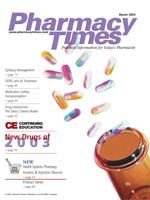Publication
Article
Pharmacy Times
Compounding Hotline
Author(s):
Q
A question came up the other day regarding the glass tile we use to compound ointments. Along the left margin, there are numbers in increments of 6, starting with 0 and going to 30. What are these numbers for?
A
The tile you have is a pill tile. Today, pill tiles are often used as ointment slabs. Formerly, they usually were white glass, larger, and mounted in a frame. They often were under-thecounter pullouts, similar to home kitchen breadboards, or they were mounted in the compounding countertop.
The pill?a small, round oral dosage form?was formerly used extensively but was supplanted by capsules and compressed tablets. Pharmacists traditionally compounded "Massa," a pill mass made of adhesive, firm, plastic substances such as starch, glycerhiza, and tragacanth. These substances were combined with selected excipients such as glucose (ideally), glycerin, acacia mucilage (not a good choice?it hardens with time), simple syrup, and water. Massa was kept in bulk for the extemporaneous preparation of pills.
To prepare a pill mass, the excipients are thoroughly kneaded, adding the selected excipient as required so that the final mass is sufficiently plastic and elastic.
In use, the pill mass is combined with active ingredient(s), and the whole is kneaded to form a uniform mixture. It is placed on the glass tile and rolled into a cylinder (pipe) with a flat board, using rice flour, starch, or other materials to prevent it from sticking to the pill tile. When the mass reaches the proper length, it is placed over the scale on the pill tile. Each mark on the pill tile scale indicates the place to cut the pill pipe. It is marked by slightly indenting it with a spatula. After marking, the pipe is cut into segments, and each is rolled between the fingers to make a globular form. A flat, smooth board can be used to roll the pills, thereby improving their surface texture.
For multiple pill production, manual pill machines formerly were available. Production occurred on a manufacturing scale as well.
E-mail your compounding questions to
compounding@pharmacytimes.com







